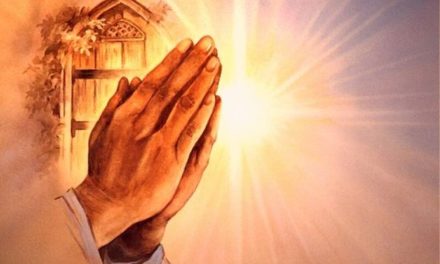The term Messianic Jew generally describes those who live out their faith as Jews, as opposed to Hebrew Christians who live within some Protestant community.
The Messianic Jewish movement has existed for some time in various parts of the world, those who accepted Jesus as the Messiah, but did not merge with the Christians. They keep their Jewish customs, their services follow the Jewish liturgy, but they unconditionally believe in Jesus (Jesua), the Savior. They seek contact with Christians and publish publications about their movement. How did the movement come about, when can it be dated, what are its characteristics? In which parts of the world are there the strongest and largest congregations? And, of course, there will also be talk about what the Jews are looking for in Israel?
Who are the Messianic Jews?
The Messianic Jewish movement consists of Jews who have accepted Jesus of Nazareth as the Messiah of Israel, the Son of God, and the Savior of the world. They live their faith as Jews and do not want to integrate into Christianity with a non-Jewish identity. They liken themselves to the first generation of Jews who believed in Jesus, who expressed their faith as full-fledged Jews. The term Messianic Jew generally describes those who live out their faith as Jews, as opposed to Hebrew Christians who live within some Protestant community.
The movement grew stronger in connection with Jerusalem coming under Israeli control in 1967.
The Messianic Jewish congregations proclaim the faith gained in the Messiah of Israel, with Jewish concepts, in a form of worship that is contained in the Jewish Scriptures. Their gatherings are held on the Jewish Sabbath, either Friday evening or Saturday. In addition, they celebrate the Jewish holidays described in the Bible, which according to their belief were fulfilled in Yeshua.
Messianic Jews regard the New Testament as the same canonized document as the Tanach (Old Testament).
Their starting point is that Israel, based on God's choice, is the people of the covenant, and in Jesus the promises of the Old Testament were fulfilled. Although almost all of them believe in the Godhead of the Father, Son and Holy Spirit, they do not accept synodal concepts easily, e.g. the Holy Trinity.
Messianic Jews see the creation of Israel in 1948 as the fulfillment of Old Testament prophecies.
In it, they speak of a future era when the Jewish people will return to their ancient land, Israel, when "the time of the Gentiles is fulfilled." The significance of the Holy Land and the holy city is more pronounced for Jews living in Israel than for those living in the Diaspora.
Today's messianic Jewish movement
They started from two centers, the United States and Israel. For Messianic Jews, Jerusalem is the focal point of hope for the end times, and even the focus of the restoration of all of Israel and the Church. The Israel and Jerusalem orientation also appears in the diaspora.
The Israeli movement tripled following aliyah (immigration to Israel) from the Soviet Union in the 1990s. The movement is diverse and diverse in terms of culture and language (Hebrew, Russian, English, Amharic).
Half of the members came to faith in Jesus before arriving in Israel, and the other half afterwards.
There are currently about 300 Messianic churches in the USA. In 1974 and 1984, two consolidating associations were established for Messianic Jewish congregations.
The growth of the Messianic Jewish movement is greatest in the member states of the former Soviet Union (Ukraine, Moldova, Belarus).
In Western Europe, these congregations were first established in Great Britain, France, Belgium and the Netherlands. Growth has started in Latin America, especially in Brazil, Argentina and Mexico.
How did the Messianic Jewish movement come about?
Messianic Jews link the creation of their movement to Protestants. Missionary work directed towards the Jews was published. According to them, this was preceded by the turning away from the theology of "substitution", which can be linked to the early church fathers. According to this, God rejected his people because of their unbelief, and the church took over the role of the allied people.
There was a change in this, because the role of the Jewish people was recognized again in the final days of God's plan of salvation.
At the same time, the Hebrew-Christian movement was formed, where Jews who had converted to Jesus appeared in Protestant churches. We note that the early church fathers may not have been wrong, because two thousand years passed before the messianic movements, until then the people of the covenant really had to be replaced.
They previously had God's sacramental presence in the "ark of the covenant", but it disappeared before the appearance of Jesus. At that time, the Catholic (universal), the first Christian church, received God's presence in the Blessed Sacrament.
The Protestants did a wonderful job of leading them to the Word, without which the conversion of the Jews to Jesus would not have happened, but the sacramental presence of God is with the Catholics in the Blessed Sacrament.
However, we see from the prophecies that the Jews must repent in the end times, this is what is happening today, in the Messianic Jewish movement. The 12 tribes of Israel are also there in the heavenly Jerusalem, so obviously God has not rejected his people for good.
Already in the 17th century, the positive future destiny of Israel appeared in the works of major authors. In the 18th century, this hope spread to the evangelical pietist circles and the Moravian brothers. And they influenced the Wesley brothers at the beginning of the Methodist movement in the 1730s. In the 19th century, British and Scandinavian Christians were greatly influenced by the prophecies concerning the Jews. Great Britain felt a national calling to restore Israel, to help the Jewish people return to their ancestral land.
The Hebrew-Christian movement within the Protestant churches gave a lot of impetus to the case.
Then, from the 19th century, missionary societies appeared in the USA, whose purpose was to take the message of the faith of the New Testament to the Jewish people. Due to the Russian pogroms, a significant number of Jews emigrated to America, where many converted. But the missions were also established in Europe, especially Great Britain, Norway and Finland excelled in this. The mission also developed in the land of Israel. By the first decades of the 20th century, a well-organized missionary society was operating in the USA.
The immediate trigger was the reunification of the city of Jerusalem in 1967 after the Six Day War.
Based on Luke 21:24, the Hebrew Christians saw the fulfillment of the prophecy in that Jerusalem will be inhabited by Gentiles until the time of the Gentiles is fulfilled. Another direct cause is the creation of the Jesus movement in the USA at the end of the 1960s, which was charismatic. There were many Jews in the hippie movement who were looking for Jesus and not Christianity. Then there was an evangelist who emphasized that faith in Jesus does not contradict Jewish identity. (Moishe Rosen) The vision of a Baptist minister who saw the need to move from Hebrew Christianity to Messianic Judaism also helped. Then the first congregations were formed, where it was possible to live a Jewish life in Jesus. These messianic Jewish congregations have been alive and thriving ever since.
Catherine the Spider












